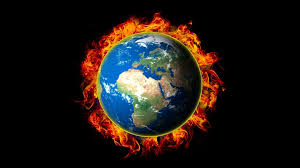The most frightening thing about the climate scare is the assault on science.
It is not just that climate alarmists usually have no qualifications in the physical sciences, not just that they ignore, hide or delete scientific data showing that there is no cause for alarm, but that they attack the scientific method itself. They want to shut down scientific debate. They want to replace it with blind faith and political consent. The nonsense about “97% of scientists” is a good example. So is the ridiculous Paris Climate Accord of 2015, which – alas! – President Biden has now rejoined.
John Kane-Berman has written a good piece on the economics of the Paris Accord. I now wish to describe its science – or rather its lack of science.
C P Snow made a famous statement in Britain in the 1950s about the “Two Cultures” of modern civilisation, the arts and science. Overwhelmingly, politicians, journalists, and activists have qualifications in arts, law, or sociology and know nothing about the physical sciences.
Yet they are the ones who prescribe policies on scientific matters such as climate change. Overwhelmingly the scientists, who do understand the science behind these policies, keep shy about it, and allow themselves to be cowed and silenced by loudmouthed politicians. Policy on climate change is made by people who know nothing about climate science.
Climate alarm is based on the theory that rising CO2 has caused the slight rise in global temperatures over the last 150 years, and that more CO2 will cause dangerous warming. It is nonsense. Mankind has indeed increased CO2 from very, very low levels in the 19th Century (about 280 ppm – parts per million) to very low now (about 420 ppm). It’s the best thing we have ever done for the planet.
It will have little if any effect on global temperatures but a wonderfully beneficial effect on plant life, which we can already see. Over the last half a billion years, CO2 has averaged about 2 000 ppm but with wild fluctuations, which never seemed to affect global temperatures. The Paris conference in 2015 was based entirely on the misplaced fear of rising CO2. Yet its final resolution made no mention of CO2.
Instead: “Its goal is to limit global warming to well below 2, preferably to 1.5 degrees Celsius, compared to pre-industrial levels.”
Let me go through this nonsense. Why doesn’t it give CO2 limits, since CO2 is its driving obsession? What does it mean by “pre-industrial” levels? Why 2 degrees Celsius? How does it intend to limit warming?
I can only suppose that giving CO2 limits would have been too specific. It wanted to be as fuzzy as possible, and so just sucked out of its thumb the need to stop temperatures rising by more than 2 deg C. Since there is no relation between CO2 and temperatures, I suppose this was good political sleight of hand.
To me, “Pre-industrial” means the time before mankind industrialised on a large scale. If you limit that to the history of civilisation, that is any time from about 8000 BC to about 1800 AD. Over most of that time, global temperatures were higher than now – while CO2 was lower than now (about 280 ppm).
When Julius Caesar was born, in about 100 BC, temperatures were about 1 deg C higher than now. They were even higher a thousand years before that. On recent trends, looking at the massive amount of climate data, there is no chance that temperatures in 2100 AD will be nearly as high as they were in 3300 BC. We have already met the goal of the Paris Accord – easily, by a wide margin.

But it seems they mean not the whole range of “pre-industrial” time but the very special, very unusual period from about 1,300 AD to 1850 AD, when temperatures were the lowest in the last ten thousand years. This was “The Little Ice Age” when the Thames froze over and crops failed. The cold increased extreme weather events. Its cause was almost certainly very low solar activity, with few sunspots, and low emissions of charged particles. (Note: it was NOT caused by low total solar energy.)
We are now about 0.8 deg C higher than we were in the 19th Century. But I emphasise that this was a time of freakish, unusual cold, and to look only at this time and not the full pre-industrial time is dishonest and misleading.
Let me end on a rather gloomy scientific note. The Sun has been very quiet recently, with low emissions of charged particles. This usually brings clouds that cool the Earth. This will not bring another ice age but it might bring some of the cold of the 19th Century. Global temperatures for December 2020 and January 2021 have showed a dip, and there have been records for cold and snow in several countries.
I don’t believe these are significant, but are just weather fluctuations. However, we should be prepared for some cold. It is the cold not the warmth we must fear.
The views of the writer are not necessarily the views of the Daily Friend or the IRR
If you like what you have just read, support the Daily Friend

